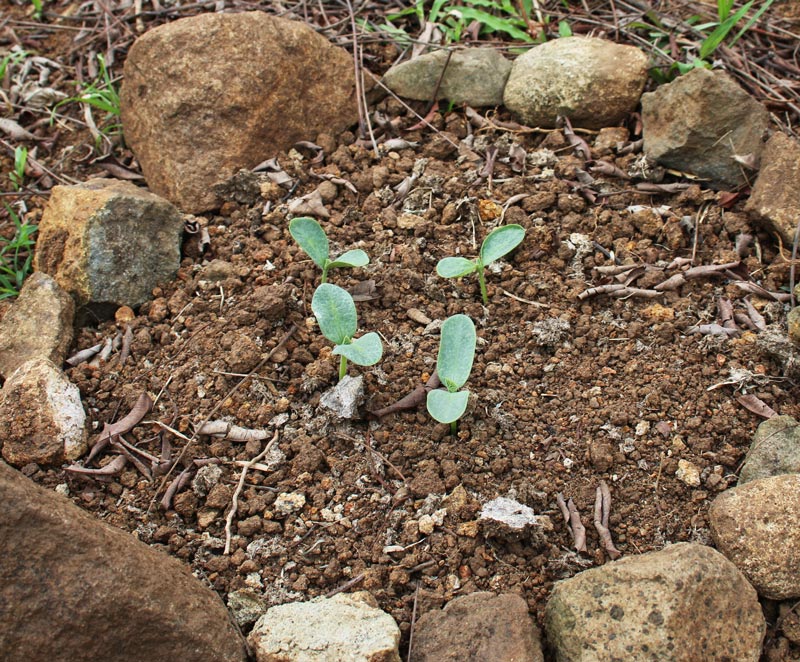Josh Centers has a good post on using the melon pit method:
Let’s say you find yourself needing to grow food quickly, but you don’t have a lot of tools to work with, and your soil is either devoid of nutrients or is hard to work. Perhaps the most efficient way to get started is with a simple mound, which survival gardener David the Good calls a “melon pit.”
Melon pits are easy and quick to make, and they can produce a lot of food. They’re a great complement to raised beds, because you can add them to spots where you don’t yet have a raised bed or a raised bed wouldn’t fit.
I made a video showing how I dug a melon pit:
Important bits:
- Melon pits are based on the agricultural practices of American indigenous tribes.
- A melon pit is a hole filled with rich organic matter and then covered with the soil dug from the hole.
- The only tool needed for a melon pit is a shovel, and you can make one in minutes.
- Bury rich organic matter in your melon pit, like kitchen scraps, spoiled meat, animal guts, and dog food.
- Avoid anything full of seeds, anything treated with herbicide, or cat litter.
- Pile the soil you dug out to form a mound over the pit, which you then plant into.
- You can plant immediately after forming the mound or wait a few weeks for the organic matter to decompose and enrich the soil.
- In theory, you can plant anything in a melon pit, but squashes will likely give you the best return on investment, since you can plant three or four and get several fruits from each vine.
What is a melon pit?
Many indigenous American tribes would plant by digging a hole, filling that hole with organic matter, and then using the soil from the hole to build a mound on top. The most famous example is the Three Sisters method taught to European settlers, in which a mound was dug, filled with fish, and then planted with corn, beans, and squash…
I just got back from South Florida and am catching up on everything. New video coming in a little while. -DTG


1 comment
Cucur-pit-a!
Comments are closed.